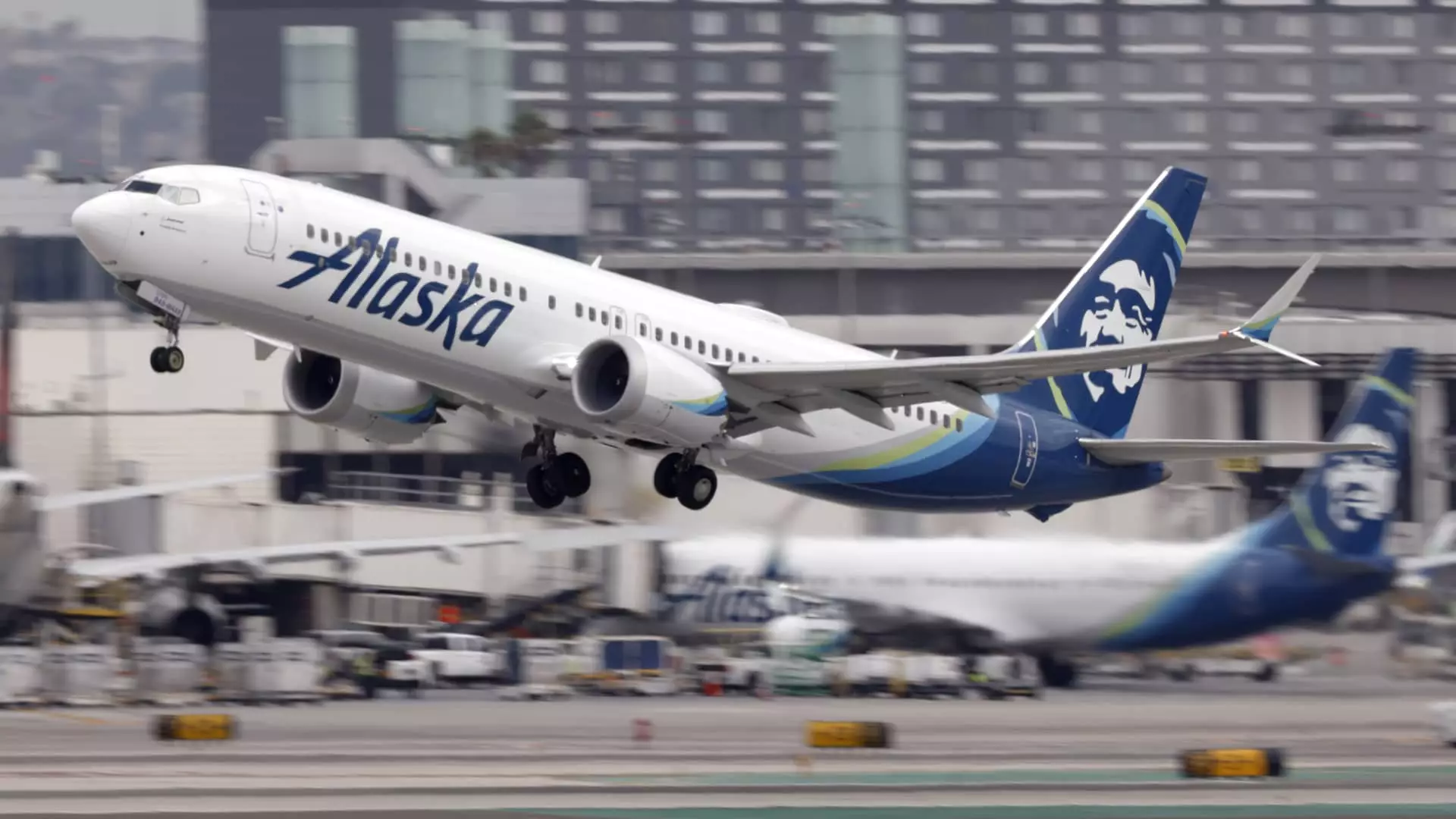Alaska Airlines’ recent push into the world of high-end credit cards and enriched loyalty programs seems like a strategic gamble that misses the mark entirely. The airline’s introduction of the Atmos Rewards Summit Visa Infinite card, with a steep annual fee of $395, appears to be an attempt at rebranding itself as a premium player. However, beneath the glossy veneer lies the uncomfortable truth: the airline is merely chasing buzzwords rather than delivering real value. In a landscape saturated with competing offers from giants like American, Delta, and even budget-conscious Upstarts like Spirit, Alaska’s premium push seems misplaced and, frankly, unnecessary.
Rather than creating a compelling proposition, the airline is playing catch-up. It’s a classic sign of desperation—an acknowledgment that Alaska’s previous loyalty offerings, which relied heavily on point accumulation and limited perks, failed to resonate with travelers seeking real luxury or efficiency. The move to offer three different earning methods—by distance, fee, or flight segment—is superficially innovative but ultimately complicates an already tangled loyalty system. It’s just another example of how airlines superficially tweak their loyalty frameworks to appear competitive without fundamentally improving customer experience.
The Illusion of Luxury in a Crowded Market
The introduction of the Atmos Rewards Summit Visa Infinite card further underscores the airline’s superficial bid to appear upscale. While the perks—airport lounge passes, delay vouchers, and discounted international fares—sound attractive on paper, they don’t truly elevate the experience for the average traveler. Lounge access, often touted as a hallmark of premium service, frequently suffers from overcrowding, understaffing, and logistical issues. Talking about lounge perks without addressing overcrowding and service quality makes the entire proposition hollow.
Moreover, Alaska’s decision to keep its brand separate from Hawaiian Airlines, despite the combined frequent flyer program, signals attempts at strategic compartmentalization rather than genuine integration. It’s an effort to avoid diluting its identity while trying to leverage Hawaiian’s brand equity. But this half-measure doesn’t solve fundamental issues like service consistency or route expansion. The airline’s plan to roll out international routes from Seattle, while ambitious, risks overextending itself without a solid foundation of service quality and customer loyalty resilience.
Overforming Loyalty: A Pitfall for the Casual Flyer
Alaska’s loyalty tiers are now harder to reach, with the thresholds for the highest elite statuses increasing significantly. The move to require more points for the top-tier Atmos Platinum and Titanium statuses signals an industry-wide trend of making it more difficult for casual or even frequent travelers to access meaningful upgrades and benefits. While competitors do the same, it raises questions about the genuine value of these tiers. Are they rewarding loyalty or simply creating barriers?
The benefits promised—upgrades when available, free premium positioning on Alaska and partner flights—are often subject to availability, which diminishes their value. These vague promises create a sense of exclusivity that’s more illusory than real. It’s a cynical move that prioritizes the appearance of exclusivity over tangible, consistent perks that genuine travelers seek. This approach risks alienating those who might have previously belonged to lower tiers but now find themselves unable to reach the new thresholds, thereby shrinking the airline’s customer loyalty base rather than expanding it.
The Growing Shift Towards Luxury—But at What Cost?
Despite the skepticism surrounding Alaska’s latest initiatives, one thing is clear: airlines believe that high-spending travelers are still their salvation. The investments in premium lounges, international routes, and high-end credit cards underscore an obsession with capturing profits from a dwindling segment of luxury-focused flyers. But the question remains: is catering to this small minority sustainable amid the broader shifts in travel habits?
The airline’s focus on creating “sticky” loyalty—adding hurdles to access perks—would be more justified if the industry had experienced increased demand for premium cabins. Yet, recent data indicate that the premium travel market is mature at best, facing headwinds from economic uncertainties, inflation, and changing traveler priorities. Alaska’s investment in amenities like Starlink Wi-Fi free for loyalty members suggests a focus on marginal gains rather than addressing fundamental issues like service quality, affordability, and route competitiveness.
An Underlying Industry Flaw: The Illusion of Exclusivity
Ultimately, Alaska Airlines’ gambit reveals a broader industry flaw—an obsession with creating illusions of luxury and exclusivity without truly addressing deeper systemic problems. Overcrowding lounges, rising fees, and convoluted loyalty tiers create the impression of elite status but often leave the traveler with frustrations rather than satisfaction. The attempt to elevate the airline’s status by introducing premium perks while neglecting core service elements feels like a superficial band-aid rather than a genuine upgrade.
In the end, Alaska’s strategy seems more about signaling intent rather than delivering substantial value to its customers. It appears willing to chase high-spending flyers with expensive perks and complex tier systems, risking alienating its broader customer base. This dangerous focus on luxury at the expense of accessibility and reliability might ultimately backfire, encouraging travelers to seek alternatives that truly prioritize value, simplicity, and consistent service over superficial prestige.

